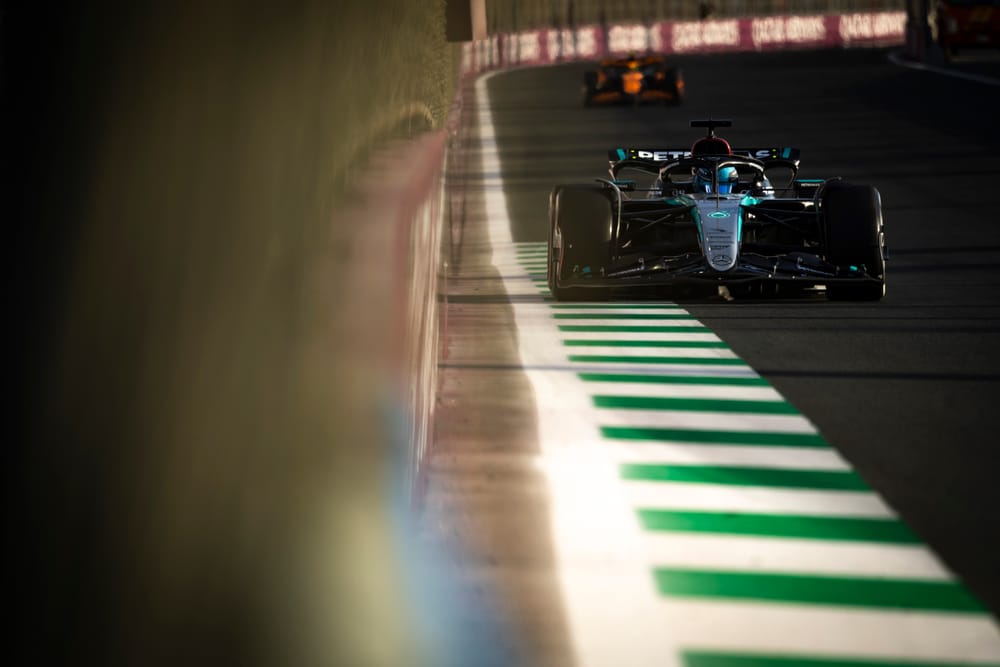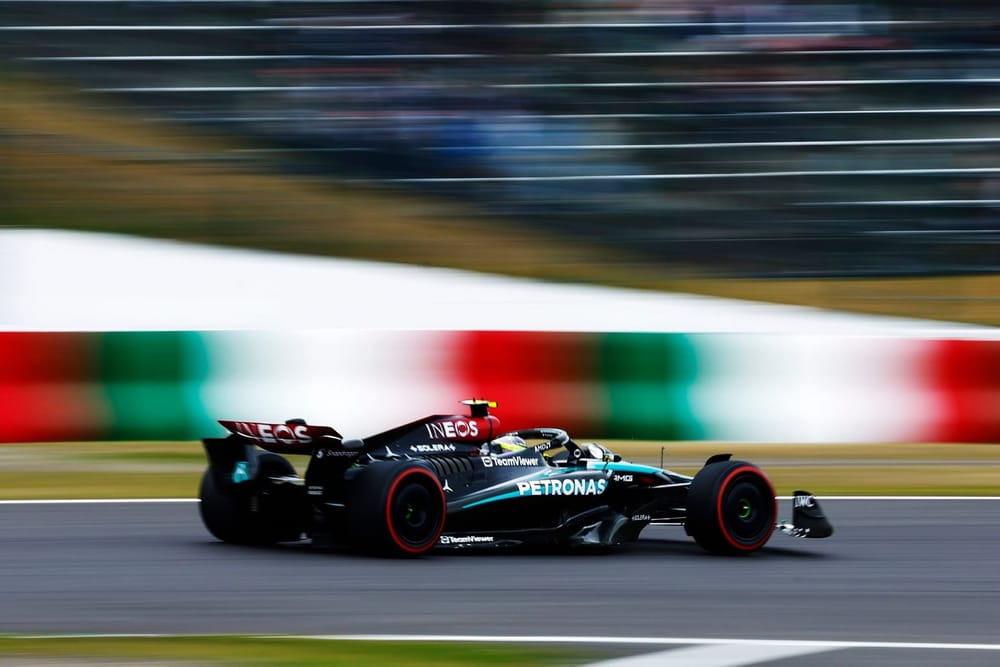Mercedes Formula 1 boss Toto Wolff’s concession that Red Bull is uncatchable while his team grapples with a car not performing as well as expected underlines its decline into a “bit of a no-man’s land”.
This is still the team that won eight consecutive constructors’ championships in a row from 2014 to 2021, a period of success that – while built on the introduction of the V6 turbo-hybrid engine formula – included one major change of regulations and several curveballs.
Mercedes is not, habitually, a team that cannot understand new rules and adapt to new situations. But as a third year of the ground-effect era has started with yet another set of problems and limitations, Wolff has admitted: “We're in a rebuild phase, you need to acknowledge that now.”
It’s a disappointing performance level - albeit one which the majority of teams would still aspire to given Mercedes finished third in the championship in 2022, was second behind Red Bull last year, and has a 2024 car that infrequently hits top spot or comes very close to it through a weekend before typically fading when it needs that performance the most.
By its own standards, Mercedes’ start to 2024 has been particularly chastening.
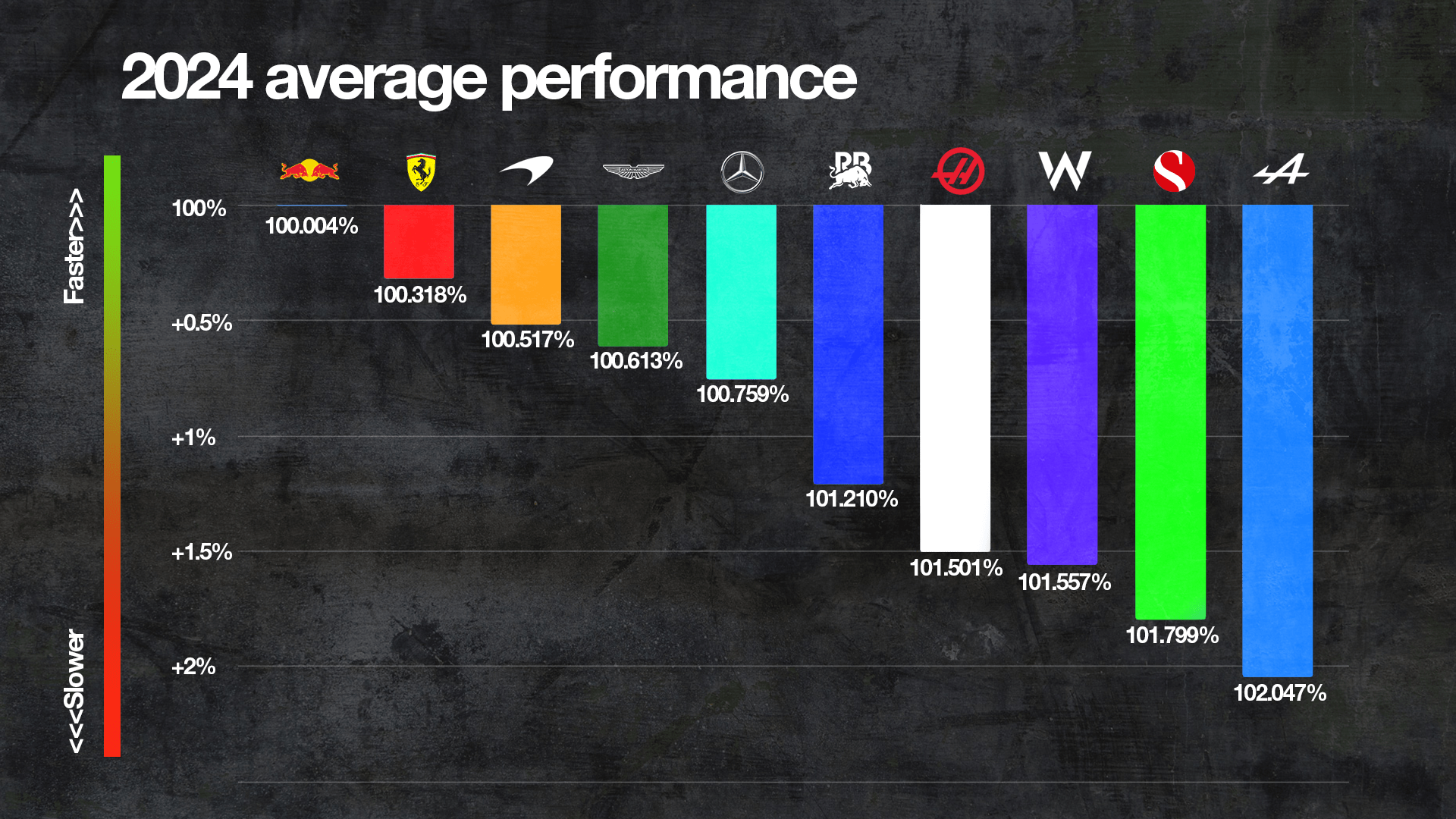
Fifth in the Bahrain opener is its best result, it barely holds a distant fourth in the constructors’ championship ahead of its customer team Aston Martin, and you have to go back to 2011 to find a season with a lesser Mercedes points total after four races.
'A MUCH MORE REALISTIC TARGET'
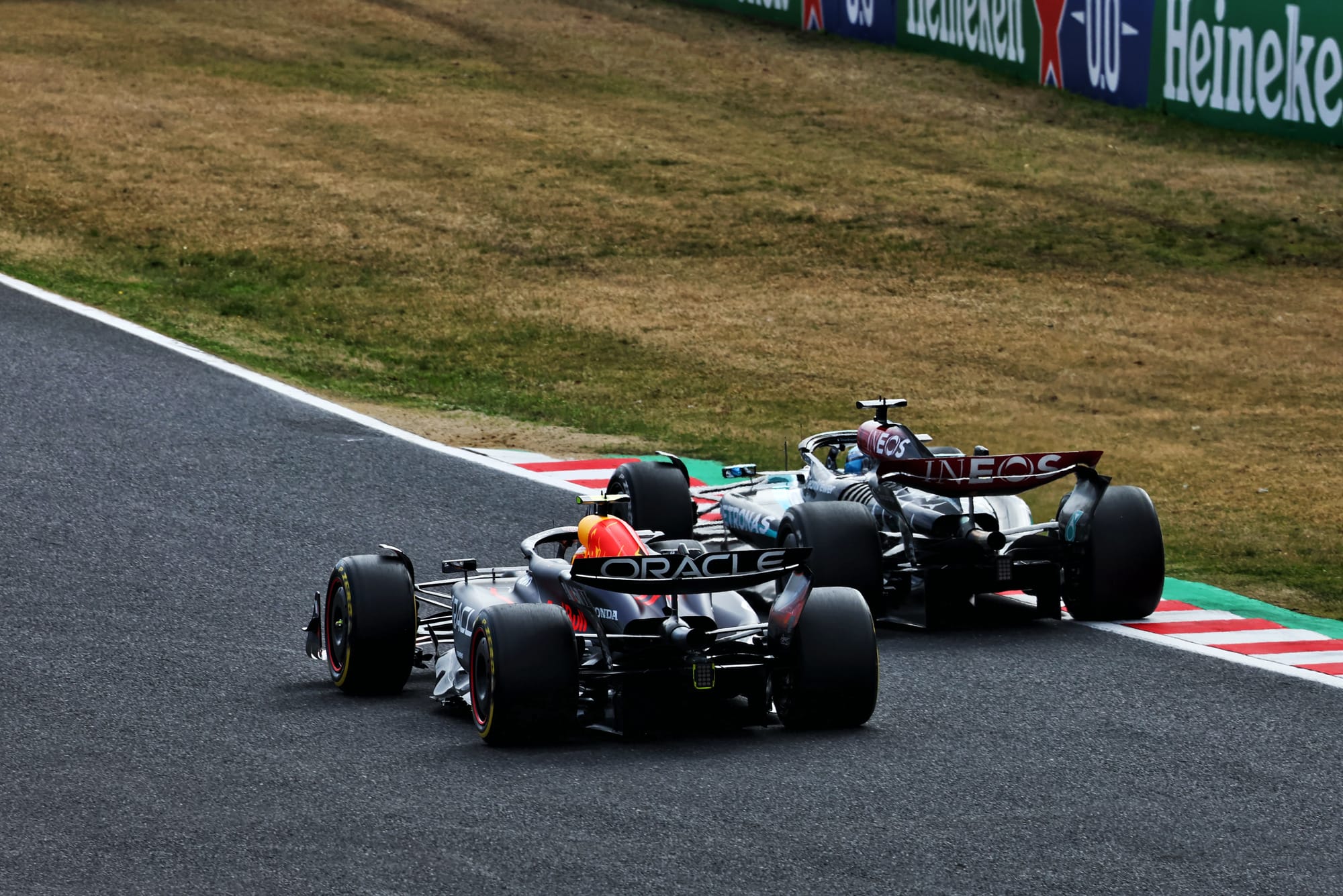
Even with a big car overhaul, it was never likely that Mercedes would pull such a rabbit from the hat in one winter that it would leap into Red Bull territory. But to have slipped backwards in competitiveness is a real disappointment.
It’s not just that Max Verstappen and Red Bull are in a league of their own. It’s that Mercedes has a fight on its hands to even be the best of the rest.
“Nobody is going to catch Max this year,” said Wolff in Japan a week ago.
“His driving and the car is just spectacular, you can see in the way he manages the tyres.
“Basically this season is now best of the rest, that's the fight that is on.
“Hopefully we can catch up to the McLaren and the Ferraris and fight for P2.”
Wolff is not publicly writing off 2024 and 2025 or focusing on the next rules overhaul in 2026. But he is facing up to reality.
The expectation is to fight for wins and eventually a championship.
What evidence is there that Mercedes will, in 2024 or 2025, be racing Red Bull for such honours?
“You can say we're in a bit of a no man's land because Max and Red Bull are far ahead and we're in this bunch and it's not satisfying for any team fighting for P2, P3, P4,” said Wolff.
“But this is the reality we're facing at the moment and we're trying to do the best out of this new reality.
“That is to beat our direct competitors whilst acknowledging that somebody is just doing a better job and setting a benchmark that we eventually need to set ourselves again.
“2026 there is a big reset, which certainly provides the most realistic opportunity for any other team to beat Red Bull.
“There is one and three quarter seasons before that and I don't want to go through much more suffering in the next 18 months.
“I just would hope for highlights and a trajectory that is going upwards.”
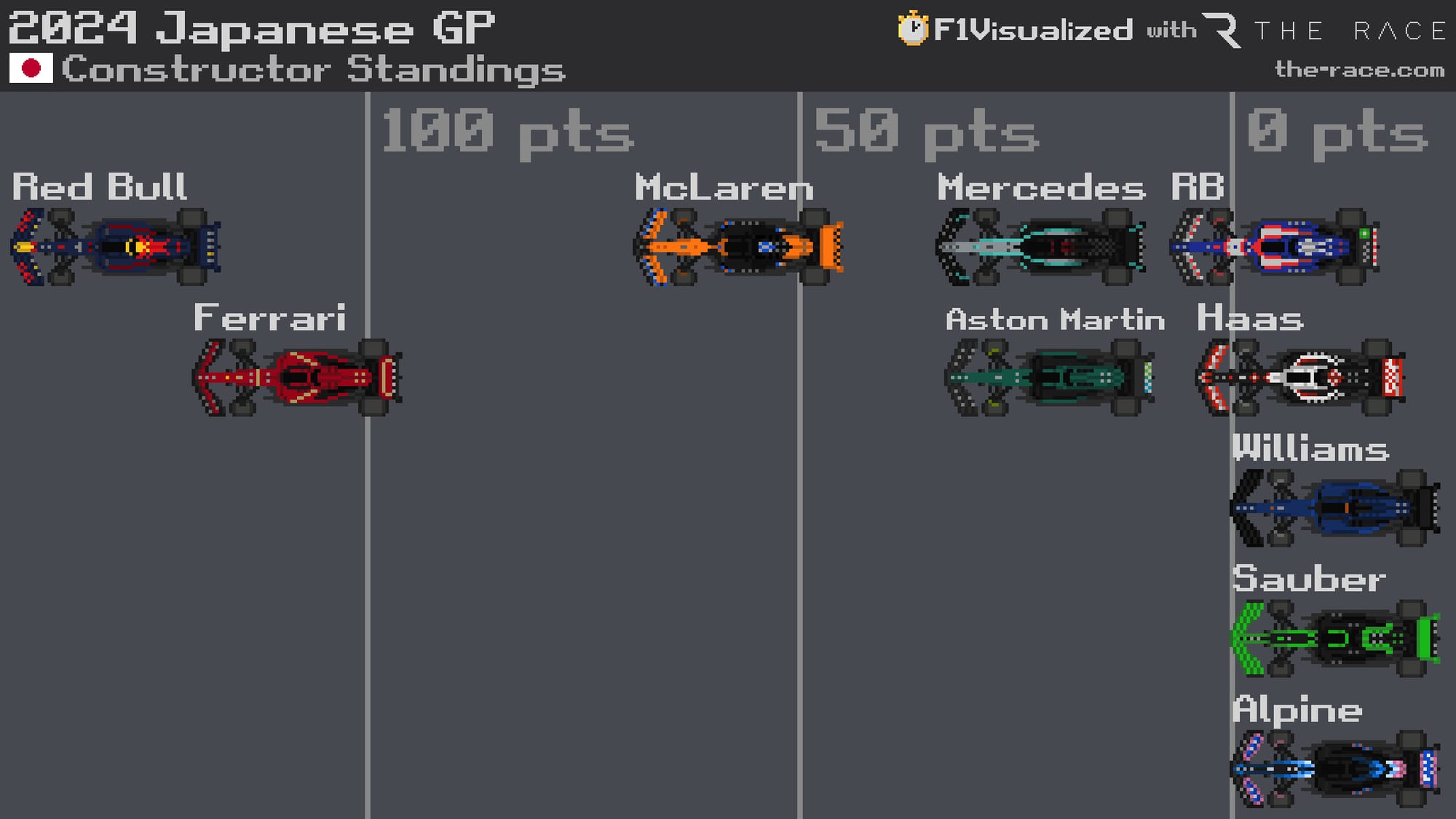
If that materialises, then the steps forward will have come after at least one or two backwards in the short term.
Mercedes’ close 2023 rival Ferrari has pulled a long way clear. McLaren’s continued its strong form from last season and looks to have an edge. Even Aston Martin is doing well enough on Saturdays to get a track position advantage that more often than not it can hold on Sundays.
“At the moment we're not able to fight them [Ferrari and McLaren] but we will,” Wolff said. “That's a realistic target, much more than Max.”
LESSONS FROM JAPAN
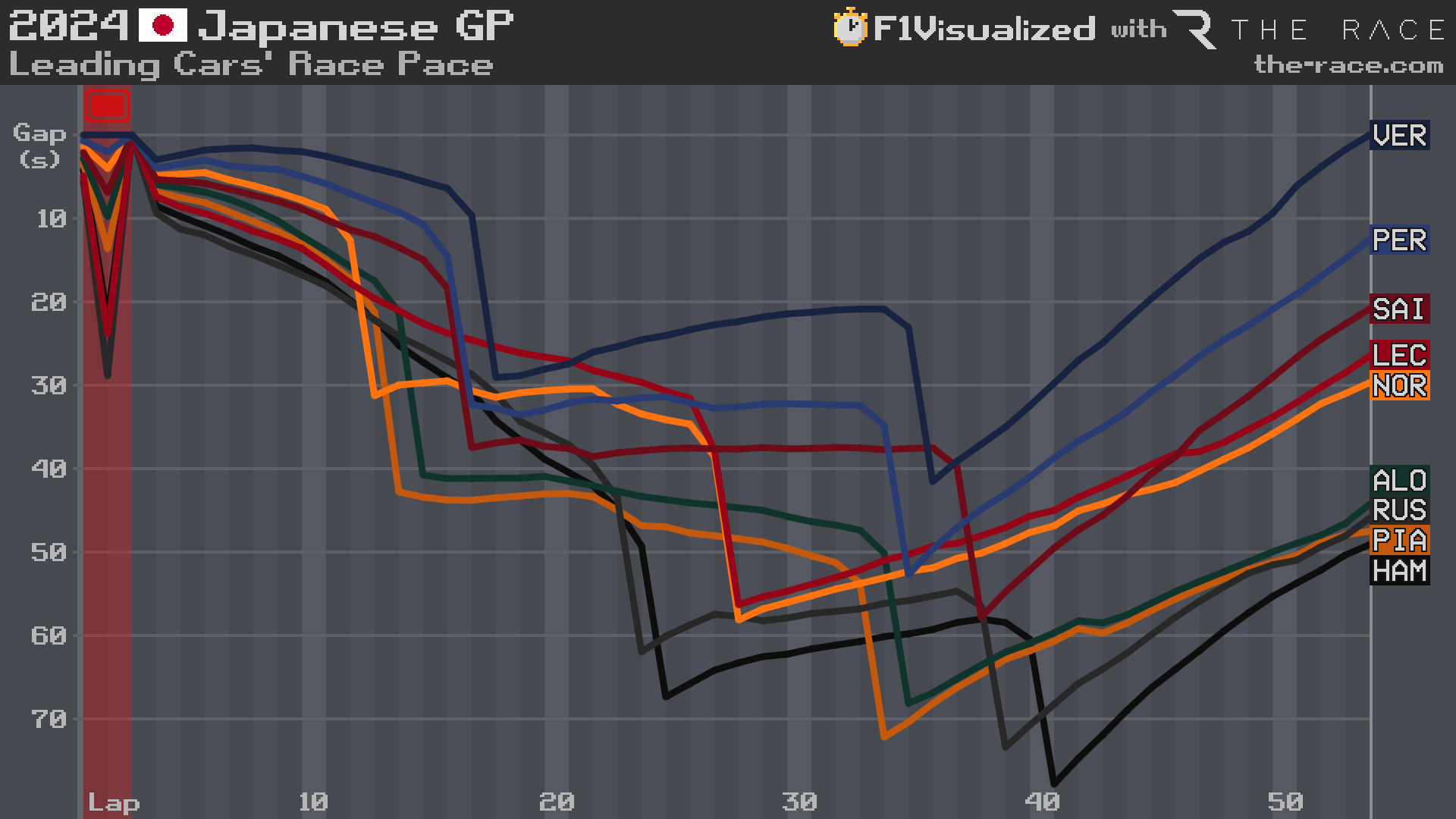
The most recent race in Japan looked like more of the same for Mercedes: strong practice pace that fades into also-ran territory come qualifying and an even more mediocre race than normal to finish seventh and ninth.
But there was a bit more to it than that. Lewis Hamilton could have realistically qualified fourth on a track that so badly exposed Mercedes’ weaknesses last season, but was only seventh.
A lot of work was done in the build-up to better understand how to set up the car and prepare the tyres to avoid overloading the rear axle. That provided a stronger baseline for the weekend and Mercedes is convinced this is a legitimate step.
“The big programme we were looking at was to try and get the car a bit more predictable through the weekend,” trackside engineering leader Andrew Shovlin said.
“What we found is that we can get it in a window but if the wind changes, the track temp changes, it quickly falls out of it and that was leading to poor performance in race and qualifying.
“Now there’s no doubt that we’re not where we need to be at the moment, we know that and we know that we’ve got work to do.
“But certainly working with the car across the weekend was easier, the balance of the car was more consistent.
“There are issues that we need to get on top of but we seem to have a more stable platform, one where its behaviour through the whole weekend is more consistent.”
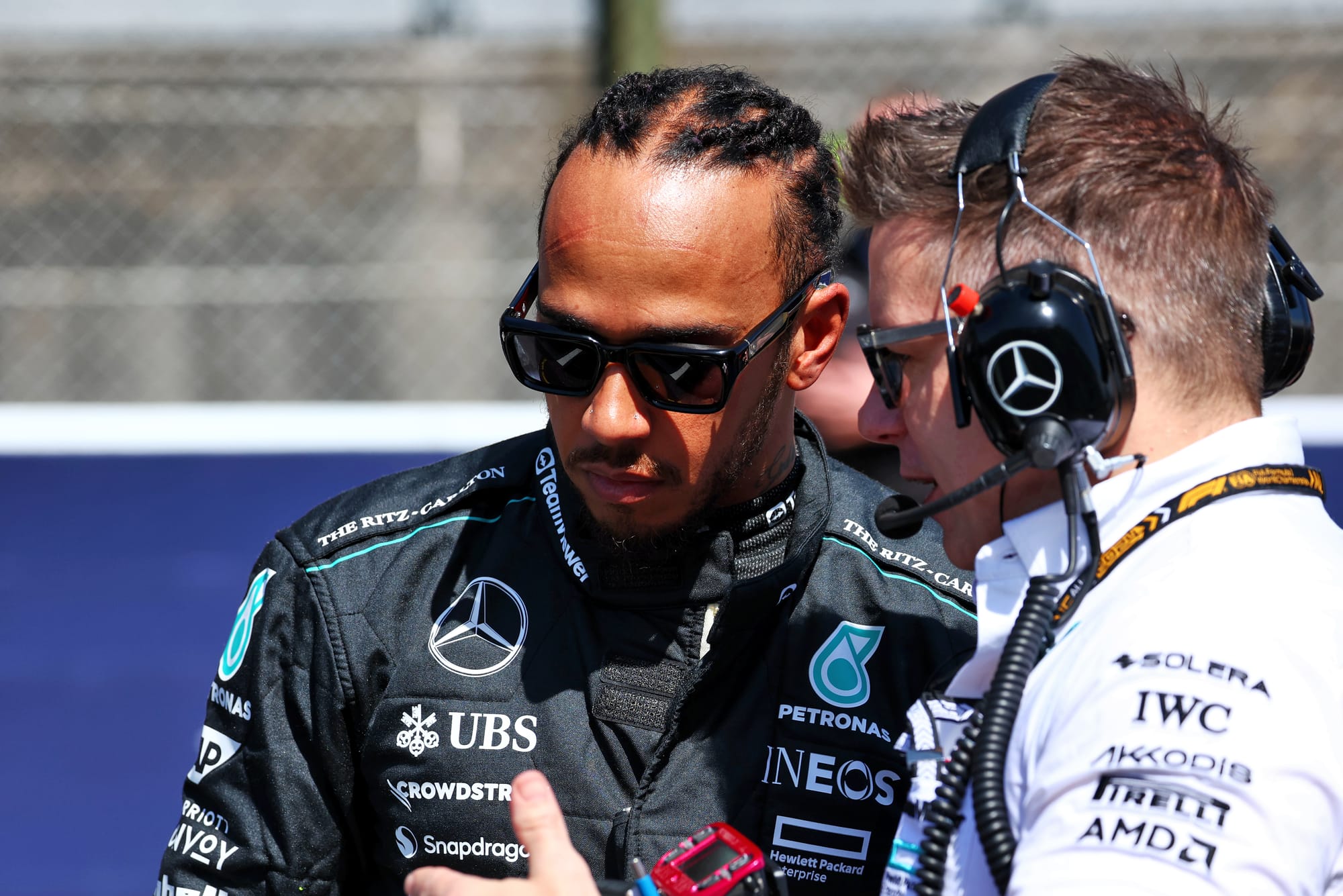
Hamilton was encouraged by progress through practice and qualifying and was far more confident in the Mercedes W15, but described the car in the race as “pretty bad”.
He finished ninth after abandoning an attempted one-stop strategy, not helped by minor damage sustained in a brush with Charles Leclerc. This did not cause a dramatic total loss of downforce but it did induce more understeer into a car that was already understeering – which took its toll over a stint, especially the first one, as Mercedes had taken out some front wing before the race.
Despite Hamilton’s disappointment it’s fair to say Mercedes couldn’t show its true pace in the race in particular because of the strategy that cost significant time in the long first stint.
As Wolff said, Mercedes was better than the result suggested – although the prospect of a podium finish seems over-optimistic.
WHAT’S BEEN MISLEADING MERCEDES
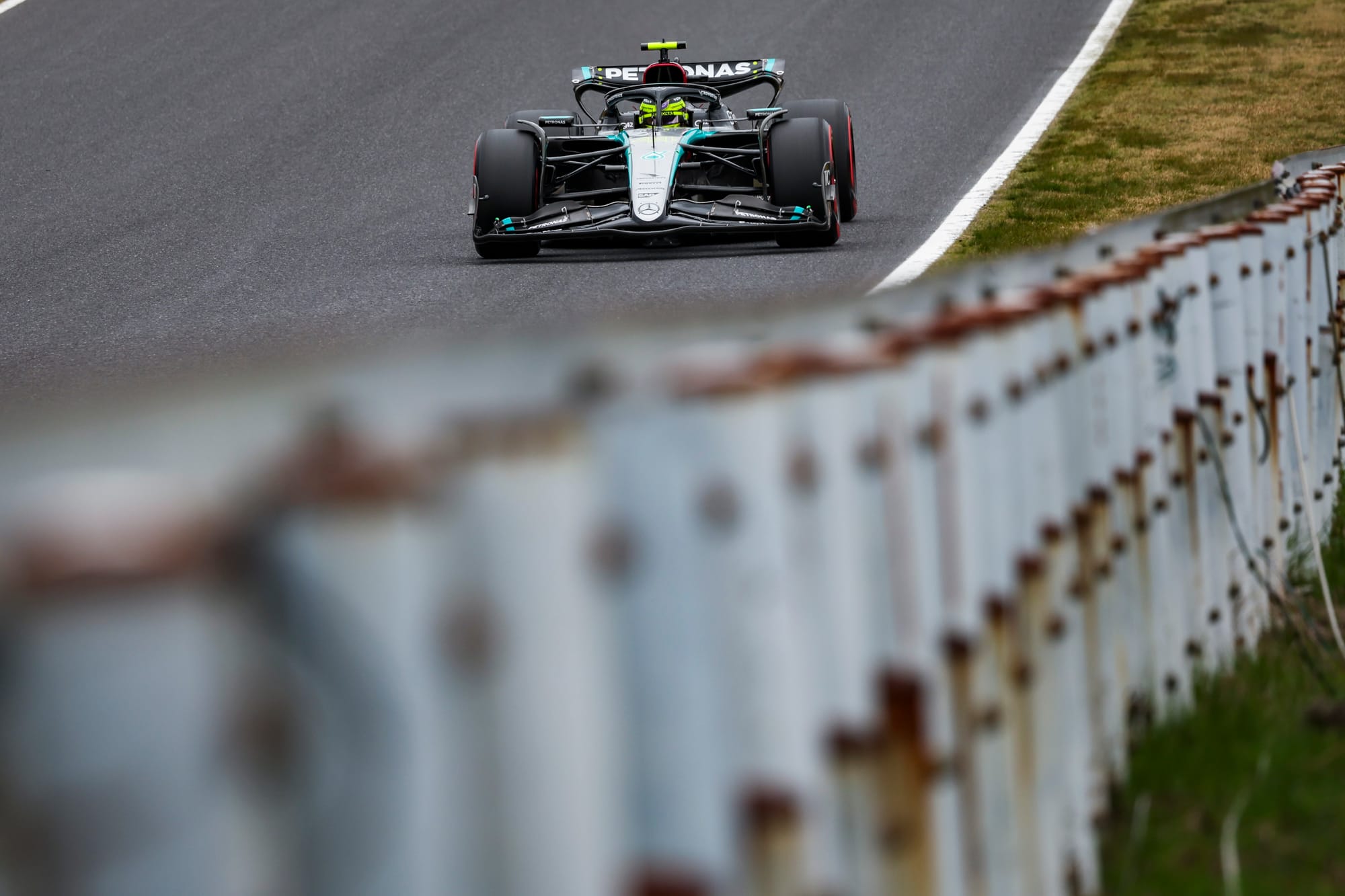
The generally smoother weekend and improved qualifying showing, regardless of the final result, explains why Mercedes can at least be slightly encouraged. In particular, the pace in the high-speed first sector was positive.
Year-on-year Mercedes was 0.332s faster in the first sector: the second biggest gain of any team, with the W14 having been extremely mediocre through the sweeps in 2023.
So this was another real silver lining. As Wolff said: “It was one of the worst tracks for us last year and we're pretty close to the frontrunners - not Max, but the guys behind, in qualifying.
“That came as a surprise. We were very quick through the esses, where last year we were nowhere.”
But beyond the gains Mercedes has made with its car, there is a point of confusion. Something about its development tools has been misleading the team. There has been talk of potential miscorrelation for several weekends now, beyond what would be considered a normal amount between the virtual world and the track.
Wolff said in Japan that the downforce Mercedes expects from this car is there, and is measurable, it just is not turning into performance.
“We're measuring downforce with our sensors, pressure taps, and it's saying we have 70 points more downforce in a particular corner in Melbourne than we had last year, but on the laptime, it's not a km/h faster,” Wolff said.
“So where is the limitation? We wanted to tick some boxes to understand, is there a limitation we haven't spotted, and I think there is.”
Wolff had previously suggested that “there is still this behaviour of the car in a certain speed range that our sensors and simulations say ‘this is where we should have the downforce’, and we are not having it".
But that is not quite the case, as he emphatically confirmed this when asked by The Race to clarify if the downforce is there but the laptime isn’t.
“That's exactly what I'm saying, yeah,” he said.
“Everything over these two years that you have seen points that there should be more downforce than we believe there is. Now we've measured the downforce and it's there, we're just not able to extract the laptime out of it that we should and that simulations show us.
“And it's not trivial. I see you looking at me like 'what the hell?' - and imagine what we think!”

